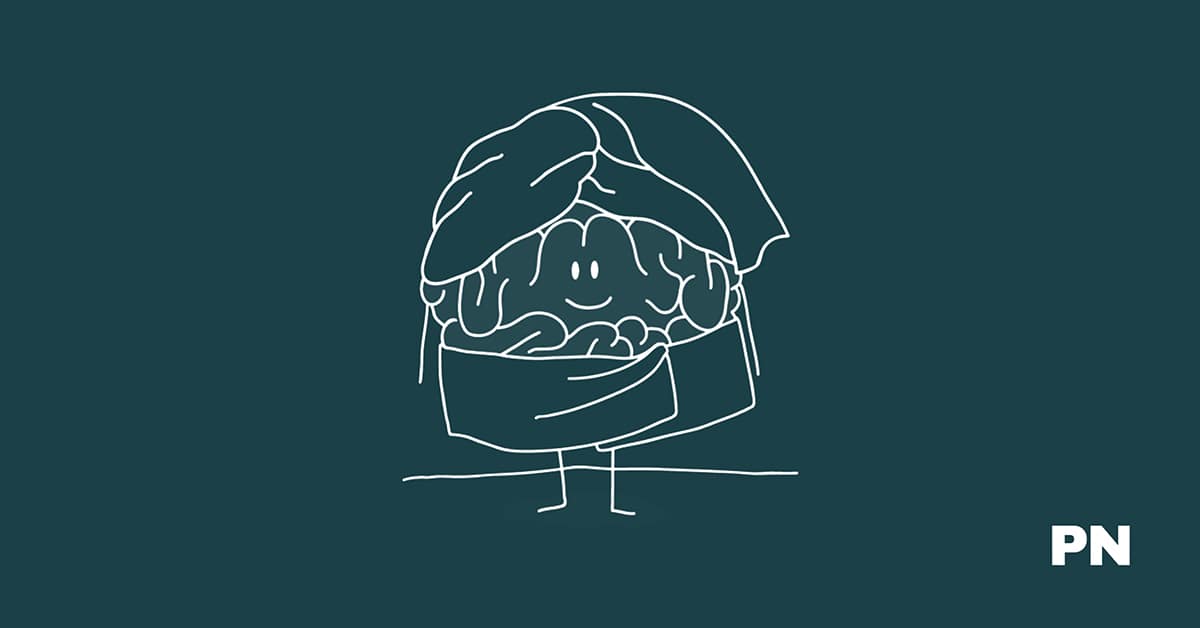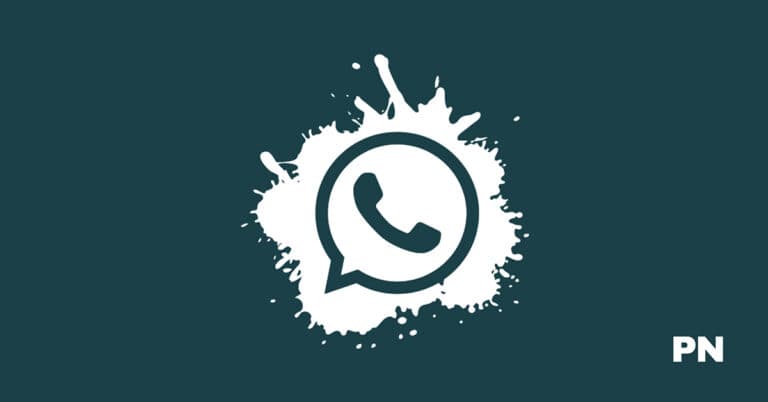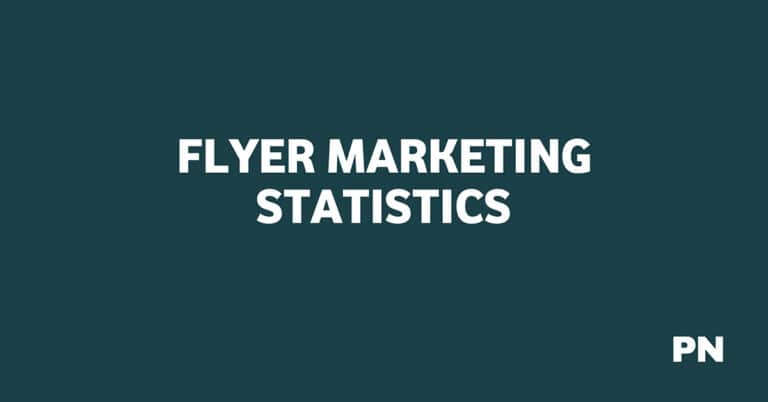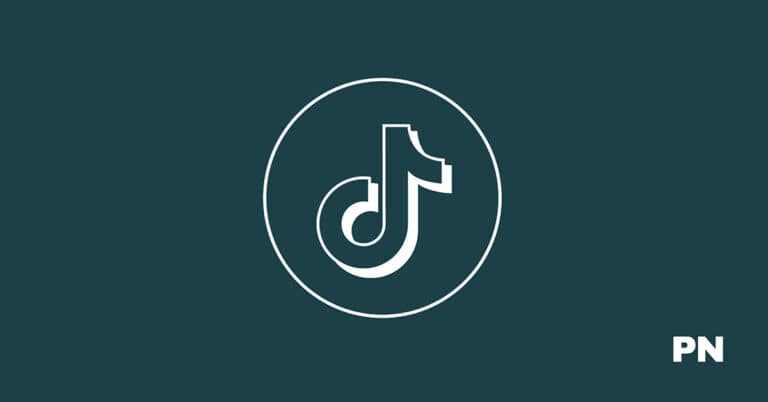25+ Latest Meme Marketing Statistics You Should Know

Meme marketing has become increasingly popular in recent years, and for good reason.
Did you know memes have around 10 times more reach and 60% organic interaction than standard marketing graphics? In fact, businesses employing memes in marketing are 60% more likely to attract purchases.
With the global meme industry valued at $2.3 billion in 2020 and expected to grow to $6.1 billion by 2025, it’s clear that meme marketing is here to stay.
But what does it mean for marketers?
Check out these interesting meme marketing statistics to see how memes can benefit your marketing strategy.
1. Businesses employing memes in marketing are 60% more likely to attract purchases.
(Source: New York University)
Memes have become a popular form of marketing for businesses in recent years, and for good reason.
Memes generate organic interaction.
This means that potential customers are likelier to share and engage with memes, leading to increased brand awareness and, ultimately, more sales.
However, it is important to note that not all businesses may benefit from using memes in their marketing.
Considering the brand’s image and target audience before incorporating memes into a marketing campaign is crucial.
Additionally, memes should be used tastefully and concerning cultural sensitivities.
The statistics show that businesses employing memes in marketing are more likely to attract purchases.
By utilizing this popular form of marketing, companies can increase their brand awareness and reach a wider audience, ultimately leading to increased sales.
2. In 2020, the global meme industry was valued at $2.3 billion and is expected to grow to $6.1 billion by 2025.
(Source: Statista)
Meme marketing has been on the rise in recent years.
Much of the meme industry’s growth can be attributed to the increasing popularity of social media platforms like Instagram and TikTok.
These platforms have become a hub for meme creators and consumers, allowing memes to go viral and reach a wider audience.
The rise of meme marketing has also been fueled by its effectiveness in engaging younger audiences.
Studies have shown that millennials and Gen Z are more likely to engage with brands that use humor and pop culture references in their marketing.
This has led many companies to incorporate memes into their advertising campaigns, with some even creating branded memes.
Businesses should consider incorporating meme marketing into their strategies to reach a wider audience and engage with younger consumers.
3. 74% of individuals exchange memes for comedy, 53% as reactions, 35% as cryptic messages, and 28% when words are insufficient, with many engaging in meme-based discussions.
(Source: YPulse)
Memes have become an integral part of social media, and their popularity continues to grow.
As a result, meme-based discussions have become a common occurrence on social media platforms.
Memes are a powerful tool for marketers looking to engage with their audience.
Brands that use memes in their marketing campaigns can connect with their audience more personally and increase engagement.
However, it is important to note that not all memes are suitable for marketing purposes, and it is essential to understand each meme’s context and cultural relevance.
Incorporating memes into marketing campaigns can be a cost-effective way to reach a broader audience.
4. Memes have around 10 times more reach and 60% organic interaction than standard marketing graphics.
(Source: Forbes)
Businesses that employ memes in their marketing strategy are 60% more likely to attract purchases.
This is because memes are a form of entertainment that can quickly capture the viewer’s attention. They are also highly relatable, often referencing popular culture or current events.
Their high engagement and shareability make them a valuable addition to any marketing strategy.
Incorporating memes into your marketing strategy can increase your reach and attract a younger audience.
5. More than 60% of consumers were more likely to purchase from businesses that employed memes in their marketing.
(Source: Forbes)
However, memes that are too obscure or unrelated to your business can come across as forced and may not resonate with your audience.
It’s also important to avoid using offensive or controversial memes, as this can damage your brand’s reputation.
If used correctly, memes can be a powerful tool in marketing.
By creating fun and relatable content, businesses can build a strong brand identity and engage with their customers in a new and exciting way.
6. A millennial has an average of 20 to 30 daily memes.
(Source: Forbes)
Memes have become an integral part of the internet culture, and millennials are among the most active users.
Memes are a great way to engage with millennials and promote your brand. They are funny, relatable, and shareable, increasing your brand’s visibility.
Moreover, memes are cost-effective and require minimal resources to create. This makes them an ideal marketing tool for small businesses with limited budgets.
7. In 2023, a modern meme has an average lifespan of four (4.017) months.
(Source: The Outline)
Although memes are amazing, their lifespans are not indefinite.
According to a study and analysis from Google Trends, the average lifespan of a modern meme in 2023 is about four (4.017) months. This indicates a significant decrease from 2008 when the average lifespan of a meme was nearly two years (23.6 months).
As the internet and social media evolve rapidly, memes are becoming more fleeting and short-lived.
Charting out the average lifespan, there is a clear downward trend.
As you can see, the average lifespan of a meme decreases, indicating that memes are indeed moving faster.
This means marketers must be quick and agile when using memes in their campaigns.
It is important to strike while the iron is hot and capitalize on a meme’s popularity before it becomes stale and irrelevant.
However, it is also important to note that not all memes are created equal.
Some memes have a longer lifespan; marketers must identify which ones are worth investing in.
By monitoring current trends and staying current with internet culture, marketers can ensure that they use memes effectively and efficiently in their campaigns.
8. 44% of internet users aged 18 to 34 often post memes online.
(Source: Visual Objects Poll)
One of the reasons memes are so effective is that they can be easily shared and spread across social media platforms.
Picture macros, text overlaid on an image, are among the most frequently employed memes, followed by video and GIFs.
This means businesses can create relevant memes for their brands and share them across multiple social media platforms to increase their reach.
9. 57% of male respondents reported using memes, but just 50% of female respondents did.
(Source: Pew Research Center)
While the difference may seem small, it is important for businesses to consider when creating marketing campaigns that utilize memes.
If the target audience is predominantly female, using memes may be less effective than other marketing strategies.
It is also worth noting that the memes used may differ by gender.
A 2022 GlobalWebIndex study of internet users found that meme types differ by gender.
Therefore, businesses should consider their target audience and the types of memes that will resonate with them.
10. Meme campaigns achieve 14% higher click-through rates (CTR) than email marketing.
(Source: Forbes)
The higher CTR of meme campaigns can be attributed to their viral nature and ability to resonate with the audience.
Memes are often humorous and relatable, which makes them more shareable and engaging than traditional marketing content.
This means meme campaigns are more likely to be shared and reach a wider audience, resulting in higher CTRs.
Moreover, memes are often used as a form of social commentary, which makes them ideal for brands looking to connect with their audience on a deeper level.
By incorporating memes into their marketing campaigns, brands can show that they understand their audience’s interests and are willing to engage with them more casually and relatable.
11. 63% of American internet users aged 18 to 29 post memes online.
(Source: YPulse)
Creating and sharing memes that resonate with your target audience can increase brand awareness and drive engagement.
However, it’s important to ensure that your memes are relevant, tasteful, and aligned with your brand values.
In addition to targeting younger audiences, memes can also be used to reach specific niches or communities.
For example, if your business targets gamers, you could create memes referencing popular video games or gaming culture.
12. Male respondents were most likely to respond to “funny memes” (65% and 36%, respectively), followed by reaction memes. Female respondents were most likely to answer with cute memes (36% and 33%), followed by “reaction memes.”
(Source: Global Web Index)
These statistics suggest businesses should consider their target audience carefully when marketing memes.
If your target audience is predominantly male, then funny and reaction memes may be the way to go.
However, cute and reaction memes may be more effective if your target audience is primarily female.
It’s also worth noting that these statistics are not set in stone.
While they provide a general idea of what types of memes are popular among different genders, it’s important to remember that every audience is different.
Therefore, it’s important to conduct your own research and tailor your meme marketing strategy accordingly.
13. Memes have become popular on social media platforms like Twitter, Instagram, and Reddit.
Memes have become an increasingly popular form of internet culture, and their prevalence continues to grow.
Twitter is an ideal meme platform with short-form messaging and quick-paced nature. It allows memes to spread quickly and be shared widely.
Also, Instagram, focusing on visual content, is well-suited for memes.
Memes can be easily created and shared as images or videos, making them a popular form of content on the platform.
Reddit, a site known for its niche communities, has also become a hub for meme culture. The site has dedicated subreddits for memes, where users can share and discuss their favorite memes.
One reason memes are so popular on social media is their reliability.
Memes reflect the human experience and can help create a sense of connectedness. They also provide a way for people to express their emotions, thoughts, and opinions humorously.
This has made memes a valuable tool for brands looking to engage with their audience on social media.
Incorporating memes into a social media marketing strategy can be a fun way to connect with customers.
However, it is important to ensure that the memes are relevant to the brand and align with its values.
Memes that are too controversial or offensive can harm a brand’s reputation.
It is also important to remember that memes have a short lifespan and can quickly become outdated.
Brands should avoid relying too heavily on memes and instead focus on creating a well-rounded social media strategy.
14. Instagram reports that users posted one million memes per day in 2021.
(Source: Instagram)
According to Instagram’s data in 2021, users posted one million memes per day on its platform. This highlights the surging popularity of memes as a form of communication and entertainment.
Memes have become an integral part of social media, and Instagram is no exception. Instagram users are increasingly using memes to express themselves and connect with their friends and followers.
Meme campaigns on Instagram also have a higher click-through rate compared to email marketing, demonstrating their potent viral appeal and expansive reach. This makes memes an effective tool for marketers to engage with their audience and promote their brand.
In addition, Instagram users between the ages of 18-24 are more likely to post memes compared to users aged 25 and above.
This indicates that memes are more popular among younger audiences, and brands targeting this demographic should consider incorporating memes into their marketing strategy.
15. In a European survey, 51% of respondents in the United Kingdom, 47% in France, and 42% in Germany admitted to using memes.
(Source: YouGov)
Memes can be used to promote a product or service in a creative and humorous way. They are often shared on social media platforms, such as Facebook, Twitter, and Instagram.
Memes can also be used to create brand awareness and engage with customers.
16. 38% of internet users follow meme accounts.
(Source: Forbes)
Memes are often used to create a humorous and relatable connection with the audience, which can help businesses to increase their engagement and reach.
With the increasing popularity of memes, it is essential for businesses to understand the impact of memes on their marketing strategy.
17. Social media users in Brazil and Mexico are the most likely to post memes worldwide. 86% of Brazilian and 85% of Mexican respondents had done so within the past month.
(Source: Mintel)
This high percentage of meme usage is likely because social media platforms such as WhatsApp, Facebook, and Instagram are extremely popular in both countries.
In Brazil, approximately 96% of internet users use WhatsApp, while Facebook and Instagram usage is around 88% and 90%, respectively.
Facebook is the most popular social media platform in Mexico, with around 70% of internet users reporting using the site.
If you’re looking to create memes that resonate with Brazilian and Mexican social media users, it’s important to consider cultural differences.
While humor is generally universal, certain cultural references and nuances may not translate well across borders.
Consider working with local influencers or agencies to ensure your memes are culturally relevant and appropriate.
18. Younger Asians are big meme enthusiasts.
(Source: Mintel)
If you’re looking to market to a younger Asian audience, incorporating memes into your strategy could be a smart move.
In fact, Chinese respondents aged 20-29 used memes 63% of the time, while respondents aged 30-39 only used them 40% of the time.
So why are memes so popular among younger Asians?
One reason could be that memes are a quick and easy way to communicate a message or emotion. They can be funny, relatable, and easily shareable, making them a popular form of entertainment and social currency.
Additionally, memes often tap into popular culture and current events, which can make them feel fresh and relevant.
If you’re looking to incorporate memes into your marketing strategy, it’s important to keep in mind that not all memes are created equal.
Some memes may be inappropriate or offensive, while others may simply not resonate with your audience.
It’s important to do your research and understand your audience before diving into meme marketing. But if done correctly, memes can be a powerful tool for engaging with younger audiences and building brand awareness.
19. South African and Nigerian social media users are among the most engaged meme-sharers in Africa.
(Source: We Are Social)
If you’re looking to target meme-loving audiences in Africa, South African and Nigerian social media users should be on your radar.
According to research by digital marketing firm We Are Social, 81% of South African and 79% of Nigerian respondents shared memes in the preceding month.
Memes have become increasingly popular across Africa, with social media penetration considerably higher in Northern and Southern Africa than in other regions. This makes South Africa and Nigeria key markets for meme marketing campaigns.
To effectively engage with these audiences, it’s important to understand the types of memes that resonate with them. For example, memes that reference local culture, current events, and popular figures tend to perform well.
It’s also worth noting that while social media usage is high in South Africa and Nigeria, the platforms used most frequently may differ from other regions.
For example, Snapchat has a significant user base in South Africa, with 5.85 million users in early 2023, making it a potential platform to target for meme marketing campaigns.
20. A staggering 31% of internet users post memes via social media and messaging apps, and another 29% solely share them on social media.
(Source: YPulse)
21. 37% of respondents claimed they have encountered a political meme during the recent month, and this figure is projected to climb.
Political memes are a form of content that can be shared on social media platforms, and they are often used to express a political opinion or to make a political statement.
These memes can be funny, sarcastic, or serious, and they can be shared by anyone who has an opinion about a political issue.
It is important to note that political memes can be controversial, and they can sometimes offend people.
However, they can also be an effective way to engage with people and to start a conversation about a political issue.
22. Memes have become a widespread way for people of Generation Z (now aged 7-24) to communicate. 77% of Gen Z respondents said they used memes to converse with their peers.
(Source: MRY)
23. Meme marketing has been helpful for brands such as Nescafe and Shaadi.com.
(Source: Passionate in Marketing)
Nescafe, a popular coffee brand, used memes to promote their new product, Nescafe Cold Coffee.
They created a series of memes that highlighted the benefits of their product, such as “When you need a pick-me-up, but it’s too hot for hot coffee” with an image of a person sweating and holding a cup of cold coffee.
This campaign was well-received by their target audience, and the memes were shared widely on social media.
Shaadi.com, an Indian matchmaking website, used memes to promote their services in a humorous way.
They created a series of memes that poked fun at common dating problems, such as “When you finally find someone on Shaadi.com, but they live on the other side of the world” with an image of a person holding a globe.
This campaign was successful in generating buzz and increasing brand awareness.
24. Both the Mumbai Police and Tinder India use meme marketing. The Mumbai Police Department uses it for public awareness programs. Tinder India uses it to engage users and dispel common relationship fallacies.
(Source: Passionate in Marketing)
The Mumbai Police Department uses memes to spread awareness about cybersecurity and coronavirus. They use humor and relatable content to grab the attention of the public and convey important messages.
By doing so, they have been able to make a significant impact on their audience and have become known for their witty and humorous social media presence.
On the other hand, Tinder India uses memes to engage with their users and dispel common relationship fallacies.
They use memes to create a sense of community and to make their users feel like they are part of a larger group. This has helped them to build a loyal user base and has made them one of the most popular dating apps in India.
By using humor and relatable content, they have been able to engage with their audience and convey important messages.
25. GameStop’s stock price skyrocketed due to an online meme stock rally fueled by social media.
(Source: NY Times)
The rally was initiated by a group of retail investors who organized on social media platforms such as Reddit and Twitter.
The group was able to drive up the price of GameStop’s stock by buying it in large quantities, causing a short squeeze for hedge funds that had bet against the stock.
The rally was driven by a combination of factors, including the ease of access to stock trading apps and the power of social media to mobilize large groups of people quickly.
It also highlighted the potential for retail investors to have a significant impact on the stock market, challenging the traditional power dynamics of Wall Street.
26. 65% of young American adults used Snapchat to share and obtain memes.
(Source: Pew Research)
Snapchat’s popularity among young American adults makes it an attractive platform for meme marketing.
Companies can use Snapchat to create and share memes that resonate with this demographic. They can also collaborate with popular Snapchat influencers to reach a wider audience.
Wrap up on Meme Marketing Statistics
The meme marketing statistics show that memes are increasingly popular and effective in driving engagement and purchases.
To make the most of meme marketing, it is important to follow best practices such as:
- Keeping memes relevant to your brand and target audience
- Using humor and relatability to create a connection with your audience
- Avoiding controversial or offensive memes that could damage your brand’s reputation
In addition, strategic insights can help you create a successful meme marketing campaign. For example, consider partnering with popular meme accounts or influencers to increase your reach.
By understanding the statistics and best practices, you can create engaging and effective memes that resonate with your target audience and drive business results.
Disclosure: We may earn commissions if you buy via links on our website. Commissions don’t affect our opinions or evaluations. We’re also an independent affiliate of many platforms, including ClickFunnels, Kartra, GoHighLevel, Podia, Northwest Registered Agent, and others. We’re not employees of these services. We receive referral payments from them, and the opinions expressed here are our own and are not official statements of these companies.





